High-rise buildings can make a key contribution to the urban fabric
Reinhard Joecks, Partner bei Foster + Partners, London, sieht jedes Hochhaus verankert in seiner Umgebung: „A great tower rises smoothly from its surroundings at ground level, creating generous, human-scaled public space that is entirely of its neighbourhood.”
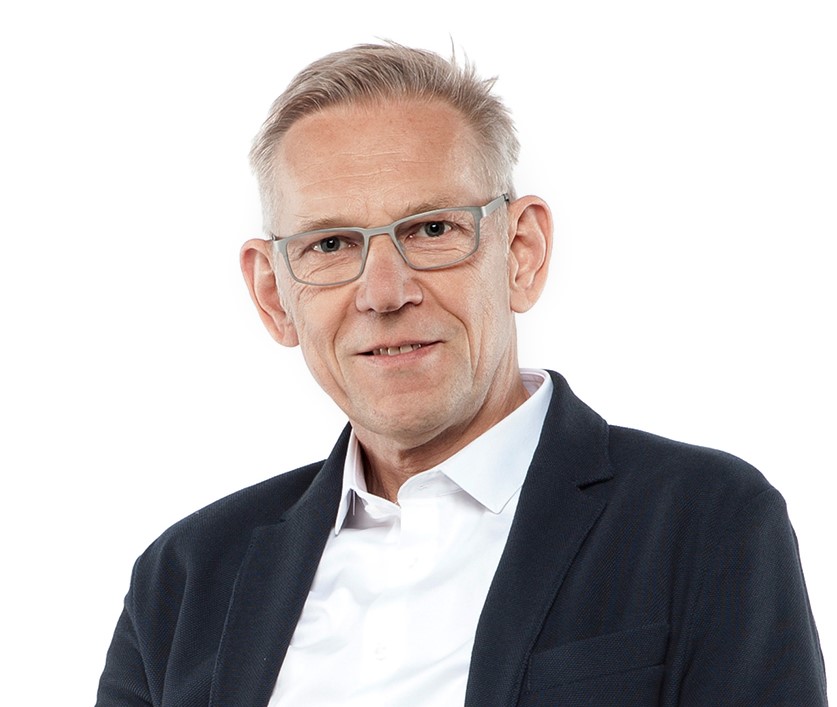
Cologne is the fourth largest city in Germany. I have had the privilege to call this cosmopolitan and cheerful city my home for the past 34 years. Over this period, I have seen the city growing, especially with an increasing demand for housing as more people choose to live in Cologne. Throughout Germany, and in particular in Cologne, there has been a strong debate about whether high-rise buildings can form part of the solution to some of the problems faced by our cities.
Over the past five decades, Foster + Partners has continued to explore and redefine the nature of high-rise buildings, pushing the boundaries of form and structure and refining a sustainable approach. The tower as a building type has evolved in response to the parallel imperatives of population growth and increased urbanisation. There is a crucial relationship in urban terms between energy consumption and density. The lowest density cities, those that sprawl, are huge per capita energy consumers. At the other end of the scale, very high-density cities have low levels of energy consumption.
In 1997, we delivered the world’s first ecological office tower for Commerzbank in Frankfurt, which stemmed from a long-held quest to reconcile work and nature within the context of a tall tower. Commerzbank helped us realise a vision for the workplace that combined a building form that supports high levels of density but pulls nature in the form of air to green lungs of the building in the atria that spiral upwards from the ground through the entire tower.
A green strategy for buildings
The city was keen to encourage Commerzbank to build a new headquarters with an outstanding sustainable commitment. We developed an integrated green strategy for the building, working closely with the client and the city planning authorities. The result is energy consumption levels equivalent to half those of conventional office towers – the offices are now naturally ventilated for 85% of the year. The green credentials of the building enabled the client to build an additional 20,000 squaremeter of usable area on top of what they had previously been given approval for (65,000 squaremeter), so there was a significant investment value in designing a building with a strong green agenda.
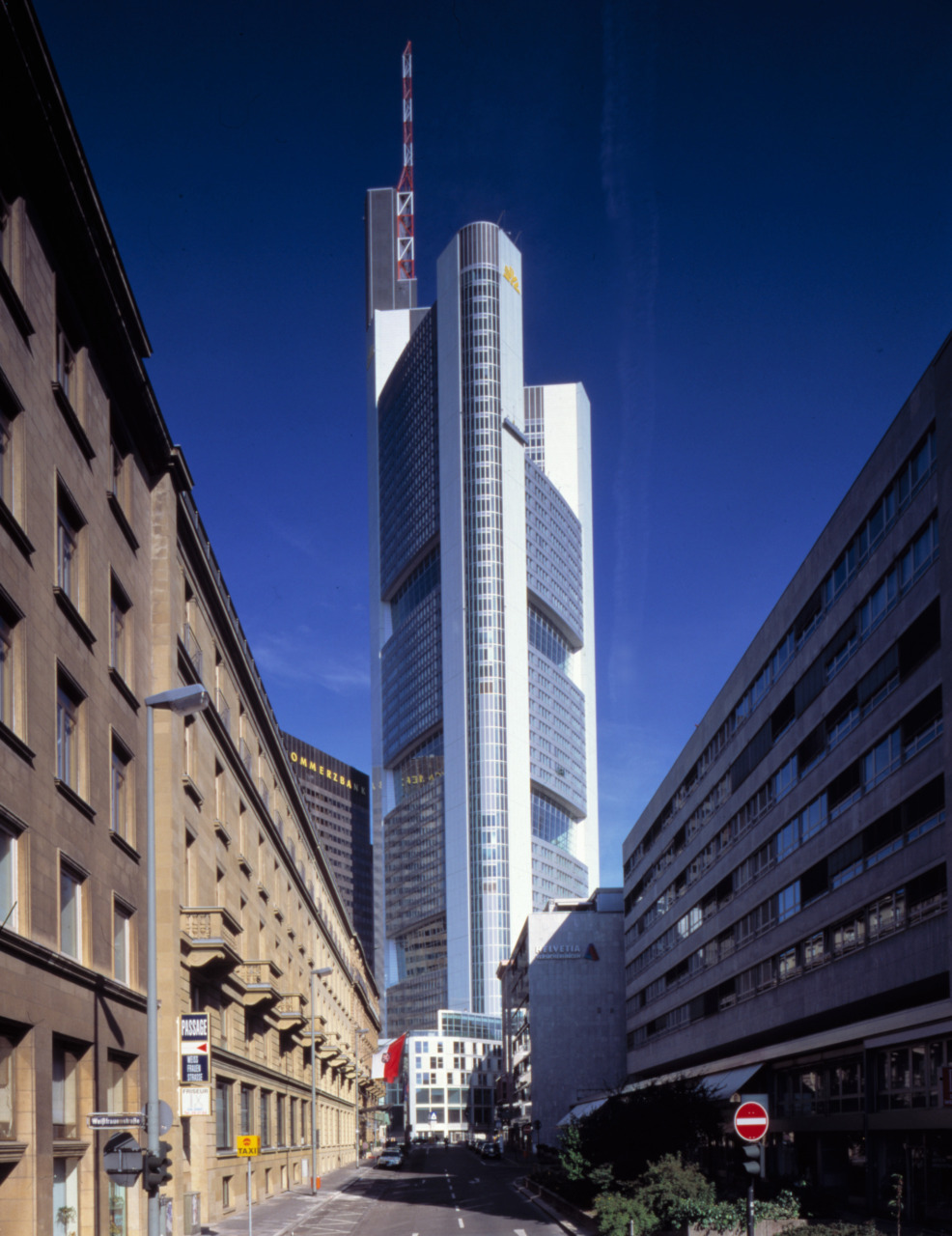
When it comes to high-rise buildings, we believe that the relationship to the skyline and streetscape are fundamentally inseparable from the building’s aesthetics. Towers have two primary points of contact with their surroundings: the top, where they meet the skyline; and the bottom, where they meet the street.
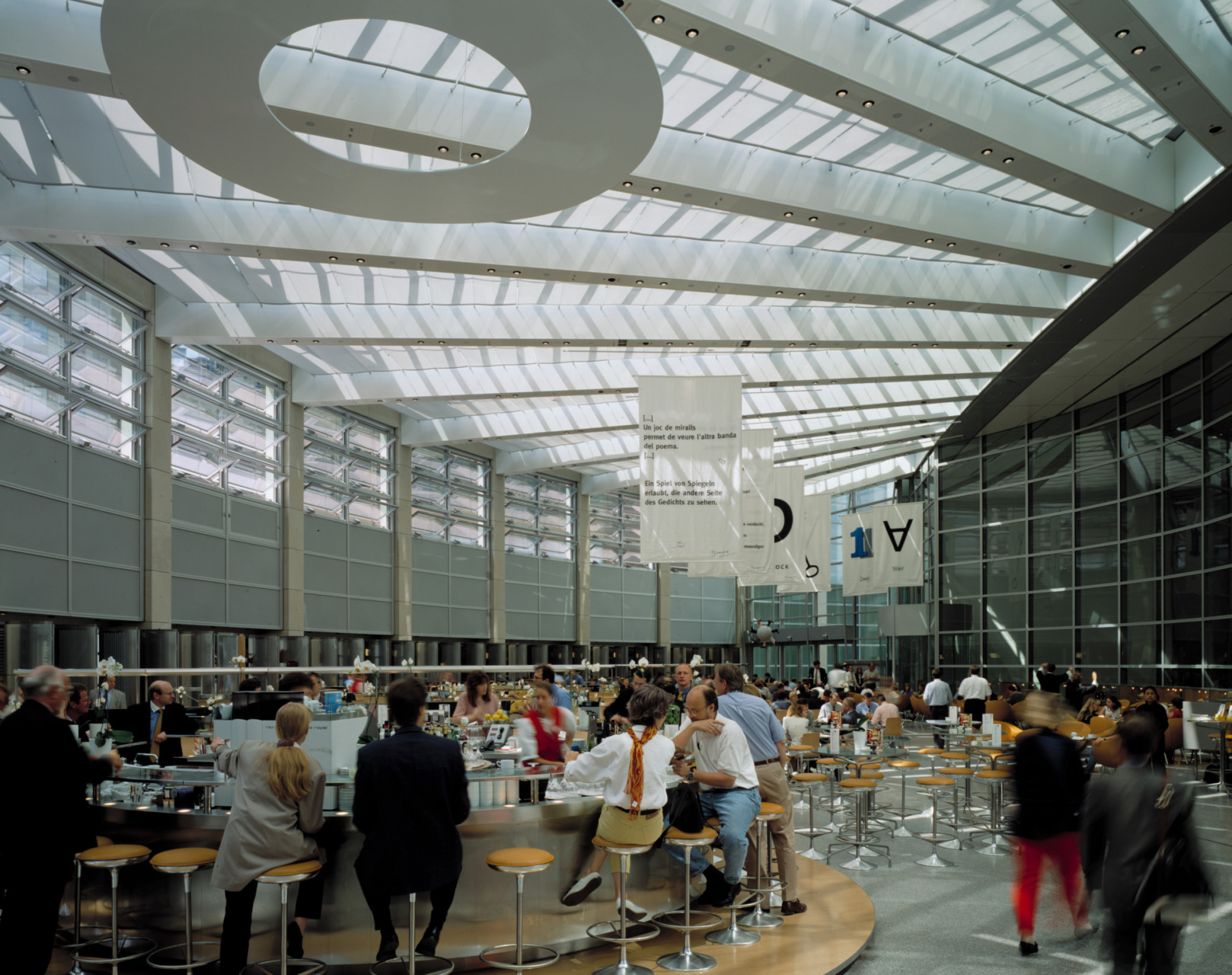
A good tower has an interesting profile in the distance but a great one rises smoothly from its surroundings at ground level, creating generous, human-scaled public space that is entirely of its neighbourhood. Commerzbank has a distinctive presence on the Frankfurt skyline but is also anchored into the lower-scale city fabric, through the restoration and sensitive rebuilding of the perimeter structures to reinforce the original scale of the block.
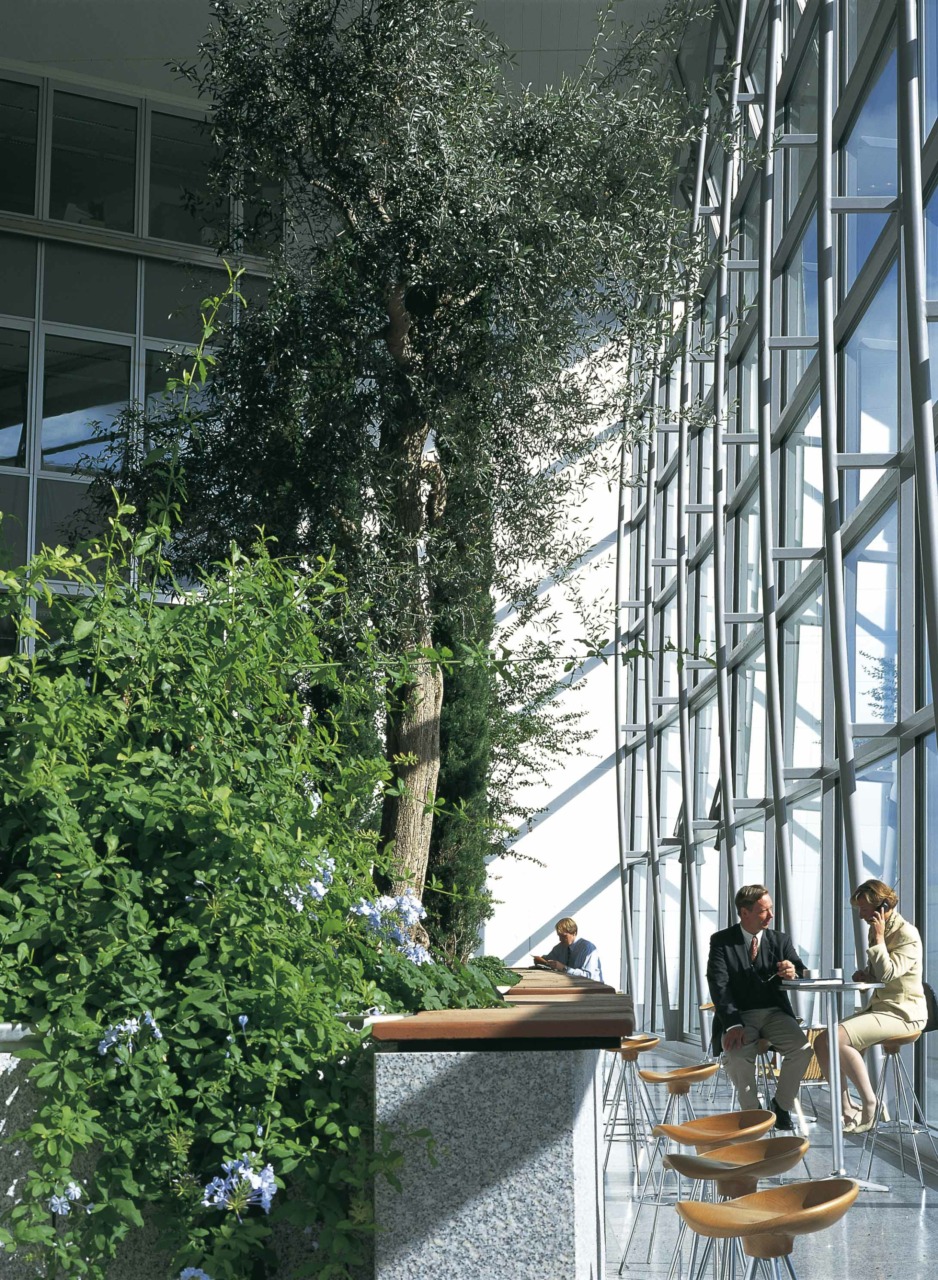
These buildings provide shops, car parking, apartments and a banking hall, and help to forge links between the Commerzbank and the broader community. At the heart of the scheme is a public galleria. With its restaurants, cafés and spaces for social and cultural events, it has become a popular pedestrian thoroughfare.
No panacea for all ills
Through careful analysis and sensitive planning, high-rise buildings can make a key contribution to the urban fabric, while creating a distinctive presence on the skyline. Interestingly, on the day the Commerzbank opened, the Financial Times adopted it as the symbol of Frankfurt, just as it features the Houses of Parliament and the Eiffel Tower as symbols of London and Paris. The model of development that gave rise to Commerzbank, could be applied to Cologne as well. In fact, given the improvements in technology that have been made over the past two decades, the sustainable ambitions of the project could go beyond what was achieved in Frankfurt.
Careful analysis of the urban fabric will enable us to arrive at the correct strategy of future development – high-rise buildings are not a panacea for all ills. For instance, Bloomberg in London is respectful of its location in the heart of the City of London, close to St. Paul’s Cathedral. In its low-rise form, sensitive massing and materiality, the new building is uniquely of their place and time – a natural extension of the City that improves the surrounding public realm. Equally, it is a true exemplar of sustainable development, with a BREEAM Outstanding rating, and the highest design-stage score ever achieved by any major office development. The historical context of Cologne and the existing urban fabric will provide their own unique challenges, but the potential for developing a new approach to sustainable urbanism in Germany – particularly in Cologne – demands exploration.

Lesen Sie hier den Artikel »Hochhäuser dürfen keine Verwertungsmaschinen sein«
Cornelia Zuschke, Beigeordnete für Planen, Bauen, Mobilität und Grundstückswesen der Landeshauptstadt Düsseldorf macht klar: „Hochhäuser dürfen keine Verwertungsmaschinen sein.“
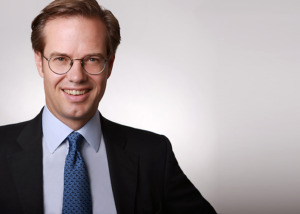
Lesen Sie hier den Artikel »Wohnhochhäuser? Das schlechte Image wandelt sich«
Philipp Schmitz-Morkramer, Vorstand der Quantum Immobilien AG, sieht einen fundamentalen Umbruch. Das Negativimage wandelt sich. Wohnhochhäuser entstehen im exklusiven Segment.
Lesen Sie hier den Artikel »Ein Beitrag zu nachhaltigen Quartieren!«
Dr. Andreas Kleinau, Geschäftsführer der HafenCity Hamburg GmbH, sieht die Grenzen traditioneller Stadtplanung: „Unsere Städte müssen nicht dichter, sondern vor allem flächenwirtschaftlicher werden. Die Förderung des sozialen Miteinanders sollte Standard werden.“

Lesen Sie hier den Artikel »Wir brauchen neue Modelle für das Wohnen in der Höhe«
Architekt und Städteplaner Justus Pysall aus Berlin bleibt skeptisch: „Wohnhochhäuser erreichen weder im Bau noch Betrieb die Wirtschaftlichkeit von Blockbebauungen und sind hinsichtlich ökologischer Aspekte vielfältig problematisch.“

Lesen Sie hier den Artikel »Hochhäuser als Selbstdarstellung einer Großstadt«
Für Kölns Stadtbaudezernent Markus Greitemann hat „der Bau von Hochhäusern auch immer etwas mit der Selbstdarstellung einer Großstadt zu tun.“ Greitemann spricht einen prinzipiellen Konflikt an: Baukultur versus Höhenwachstum.
